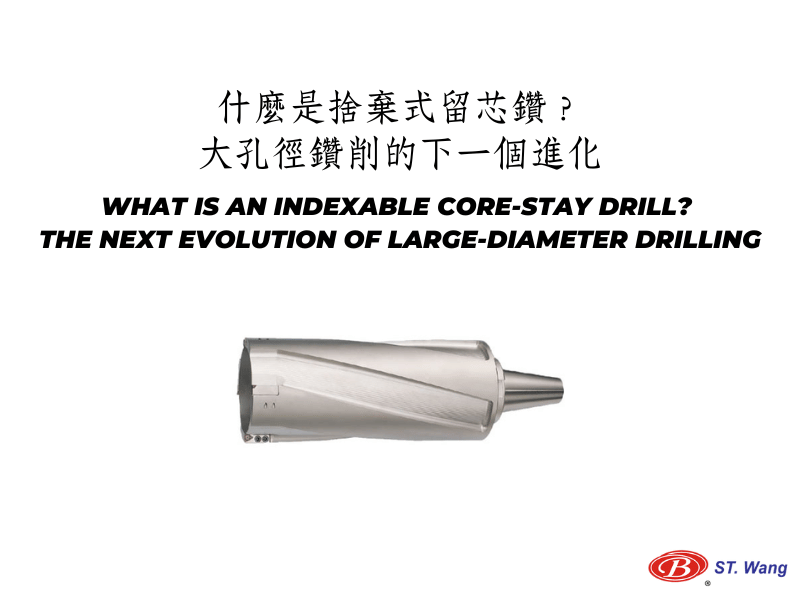In the past, machining was all about accuracy, reliability, and speed. However, in the current fast-paced manufacturing industry efficiency is a must. If you manufacture automotive components, aerospace components or high-tech products, the tools that you select directly impact your bottom line. High-speed drills, tungsten-carbide end mills and threading inserts are all important.
These aren’t just a way to update older software. These new tools allow for efficiency in working, which minimizes the amount of downtime, saves money and delivers better results while making use of less effort. Let’s examine how each aids manufacturers to drill deeper to cut faster, cut better, and finish quicker.

Image credit: stwang-tw.com
Indexable Drills: More Holes, Less Hassle
In the past, drilling large holes was time-consuming and expensive. Drills made of solid material often had to be sharpened. They wear quickly out and slowed the process. More machinists use the indexable drill. When the tool becomes dull instead of replacing the whole tool you can simply change the cutting inserts.
The efficiency of indexable drills is what makes them stand out. They’re built to last, come with robust designs, and require only minimal maintenance. The ability to replace inserts can minimize inventory and waste while also prolonging the life of machines. SHANG TZANG WANG ENTERPRISE Co., Ltd. provides disposable drills that provide consistent performance in large diameter applications. This upgrade could reduce downtime for shops who perform repeated hole drilling.
High Speed Drills – Designed to Modern Demands
In an context where speed is crucial, high-speed drills allow you to get the job done quickly, without sacrificing accuracy. These drills are great for materials that are tough and have quick cycle times. They are used in everything from medical precision components to large-volume automotive components.
Modern high-speed drilling machines feature cutting-edge coatings as well as optimized flute designs to reduce friction and heat buildup and extend the life of tools. It means less tool change as well as less breakage, which means greater production. Making the switch to a high-speed drill is a great option for any machinist that has experienced the frustration of a broken tool mid-cycle.
Tungsten Carbide End Mills: Reliable Performance Cut After Cut
When it comes to milling, tungsten carbid end mills are the most reliable tools in the shop. These end mills are known for their heat resistance and hardness. They are also able to mill through tough materials without losing edge sharpness. These tools are reliable for every task such as roughing large sections to finishing corners.
What makes tungsten carbide end mills distinctive is their adaptability. The different coatings, helix angles, and flute count are customized for a wide variety of tasks, ranging from aluminum to titanium. Carbide end mills are the most suitable choice for machinists who are looking for both durability and precision. They can provide an ideal balance between aggressive material removal, and a smooth surface finish.
Threading Inserts: Tiny Tools, Big Impact
It could appear that making threads is an insignificant part of the entire process however, it’s actually vital. A bad thread could ruin any part that’s flawless. That’s why a high-quality threading insert matters. The tiny, replaceable inserts are specifically designed to cut internal or external threads with extreme accuracy and reproducibility.
Unlike traditional taps and dies which wear unevenly threading inserts provide consistent results over many cycles. If one edge becomes dull simply index it to the next cutting point no need to remove the tool or re-grind. This is an easy affordable, simple, and cost-effective way to do it. Machinists not only love threading inserts for their speed, but also for their dependability. An appropriate insert will ensure that your threads are perfectly sized the first go. There’s no need to do rework or repeated passes.
The Bottom Line
Modern machining is time-sensitive. It’s not a good idea to waste time. The most efficient companies today are moving to smarter and more adaptable tools. These cutting tools are not only more precise, they also simplify workflows and reduce changes, as well as extend the lifespan of the equipment. The result? A decrease in time spent attempting to solve problems and more time focused on delivering precision parts. In a field that is subject to higher demand and lower margins manufacturers can remain competitive with tools that perform better.